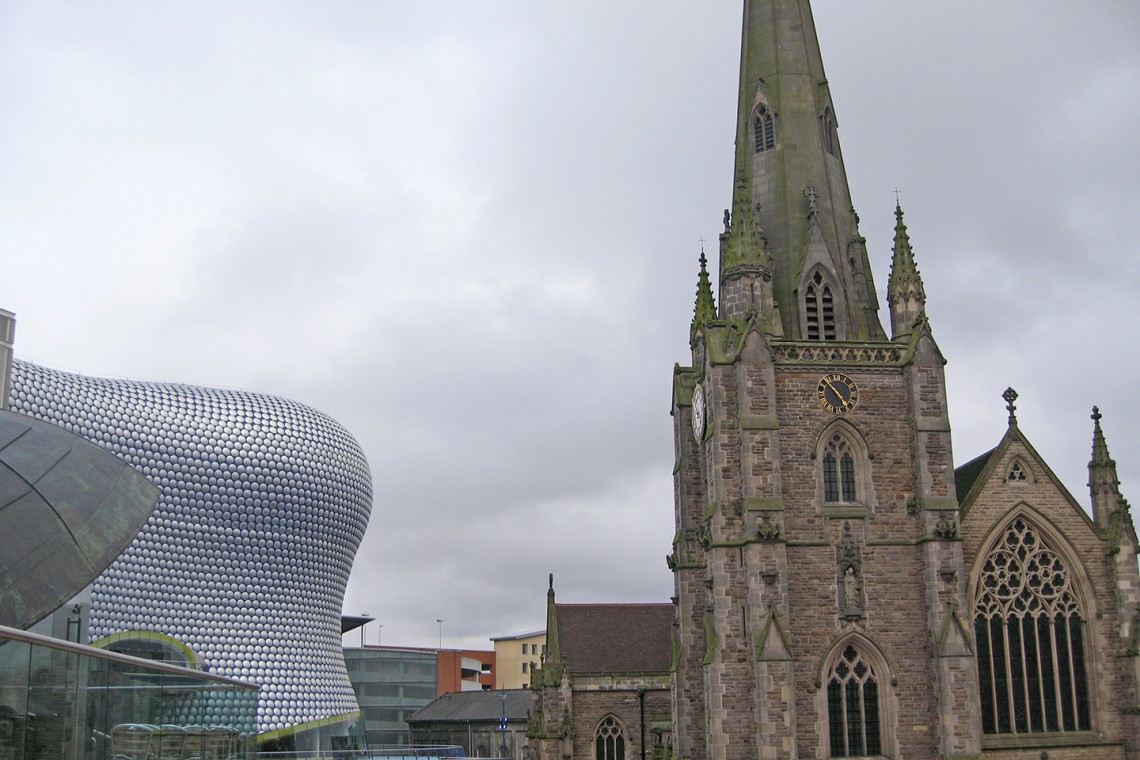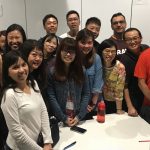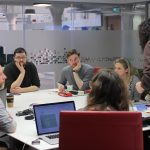A couple of weeks ago in Birmingham I had the opportunity to visit two excellent attractions and get a taste of what’s going on in exhibition and interpretative design in the U.K. It was a small taster, but I was impressed and inspired.

Cadbury World is actually three separate self guided tours, in three separate buildings. This might sound unwieldy, but meant staff to direct us to one section ahead of another, more crowded part of the tour – keeping us occupied while the crowds dispersed.
The “Essences” experience begins by telling the story of Dairy Milk through a beautifully realised visual presentation spread through three rooms and across screens and spaces. Ghostly projections of characters appear within cartoon-like sets using what looks to be a technique called “Musion Eyeliner“.

In the final room a beautiful, polished steel pipe stretches across a counter behind which chirpy staff members instruct visitors to touch the pipe. The realisation that the pipe was warm – filled with oozy melted milk chocolate – cause a stir of excitement in the group. We each chose a filling, or “essence” and staff poured warm, creamy chocolate into our paper cups before sending us away. Not a screen, projector, or camera in sight.

The original Bourneville Building accommodates a more traditional museum focusing on the company’s history, culture and development. An impressive scale model of the Bourneville area and the original factory is the centrepiece.
The main attraction, the Cadbury World experience included another tour with audio visual accompaniment taking visitors from a recreation of the street upon which the Cadbury business began, through to the process by which chocolate is made, and into the actual factory itself.

The final section of the Cadbury World experience included a myriad digital toys all tied into the brand or past advertising. This was playtime for me, and there was plenty of inspiration to be found. Tilt-controlled platform games, a “Cadbury World” spherical projection, make your own chocolate statuette and a few computer vision toys added to the mix.
The concept development around the brand was very strong. Use of space in some circumstances absolute genius (read… at the exit, with a beautiful “Purple Planet” optical illusion). The entire tour struck a nice balance between interpretative exhibits and the real-world charm of the product, brand, and made good use of the real factory floor as an attraction.
Unfortunately, to the trained eye, some of the digital toys looked dated. Frame-rates slipping and responsiveness lagging to levels which might not have been noticable this time last year and to which the public might scorn in a year or two’s time. I got a sense that as the public’s critical eye evolves older hardware/software combinations might find themselves lacking the punch required to maintain attention.
Overall though, the entire experience was entertaining, educational, very enjoyable and highly recommended next post – the excellent ThinkTank Science Museum in Birmingham’s city centre.





Comments by John Lynch
Copenhagen to London
"Miguel - so happy you enjoyed the talk. While this post is..."